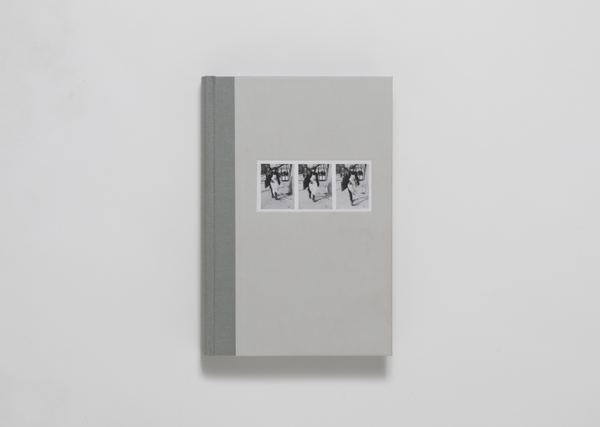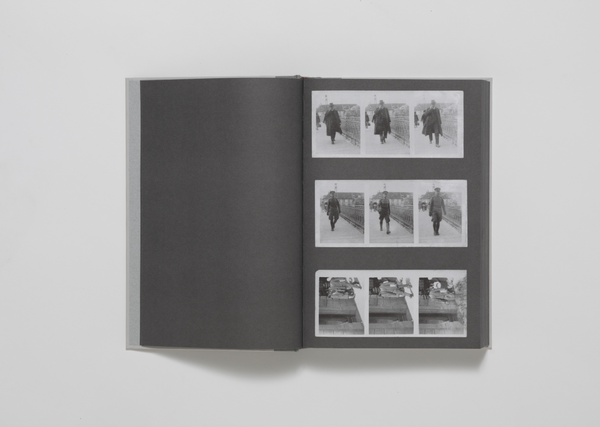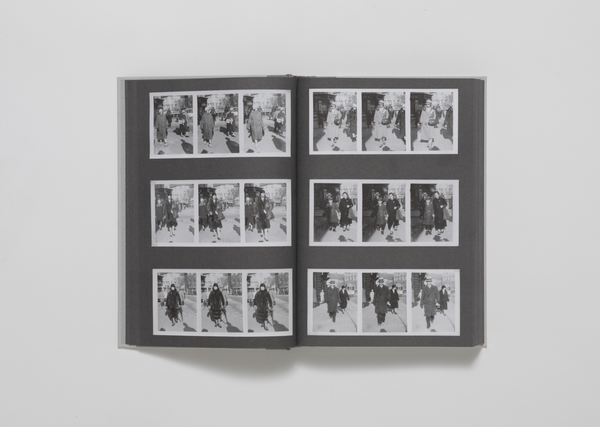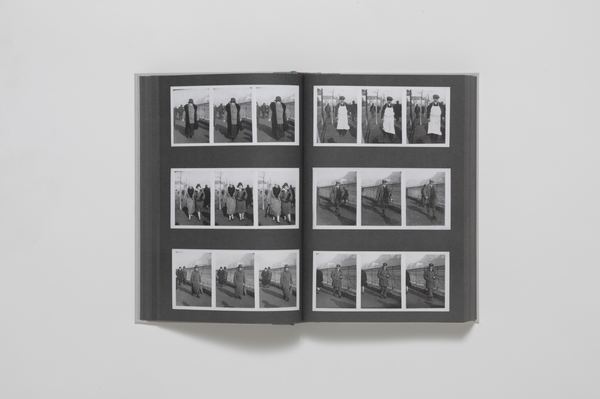



Mila Palm
Der Grazer Gehfotograf
Rorhof, Bolzano — 2023
The so-called "Gehfotografen" were street photographers who were mainly active in big cities like Berlin or tourist destinations like Nice from around 1927 to 1935. The photographers gravitated around public places, where they photographed passers-by in series of three shots. Strips of 35mm film were exposed and formatted as postcards. Marketed as a souvenir, included in an album or cut into individual images and folded into a wallet, pictures were marketed to the unaware sitters with the argument that they had had the honour of being filmed. People were handed over a piece of paper saying: "You have been filmed". Those who were interested in purchasing their shots could pick up enlarged film pictures after two days for a total of 1.5 Schilling, which back then was the cost of a lunch.
The Graz street photographer's activities can be dated to around 1929-1932, a period that coincides with the Great Depression. The New York stock market crash happened in 1929. In Austria, unemployment and misery were on the rise, eventually leading to civil war in 1934. It seems likely that for a lack of studio commissions, professional photographers sought new sources of income and headed out on the street.
Photos of walking filmmakers are rarely preserved as everyday photography (especially in uncropped form) because they were only produced for a few years. The present collection probably consists of those 1200 photographs that were not collected by customers. If this is true, a sum total of over 10,000 photos were taken.
In the 1920s, illustrated print media and film shaped star culture and media forms of representation. Urbanites in particular were therefore familiar with active image-making. Self-dramatisation could be tried out, at least in portraiture, in the photo automata (also image sequences). The serial, time-shifted sequence has the moment of the cinematic and invited self-presentation. The characteristic of a way of walking became visible especially from two people. By changing the walking speed, the reaction to the photographer became clear. The photographer with his tripod must have already been visible at a longer distance. Over the years, most passers-by knew the photographer and vice versa. People who recognised him reacted differently to the camera. Many passers-by seem to have been photographed at the exact moment they saw the photographer, made eye contact with him and reacted. Not all were positively surprised by this and smiled towards the camera. Many seemed awkward, surprised, suspicious or even irritated. Only some of those pictured took the opportunity to help shape the picture and pose. Today, being photographed in public space without being asked would be considered an invasion of personal privacy. However, urban space is permeated by surveillance cameras and the role of the individual is played out by the "ideal" public image.
The street was a place of self-expression and a mirror for public display. Many people in the photographs are warmly dressed, which suggests that the photographer was primarily active in autumn and winter (often on rainy days). It stands to reason that he took advantage of the increased number of visitors due to the Graz Autumn Fair. From 1906 onwards, this fair was conceived as a show of samples and goods from Austrian producers and, with the addition of an amusement park, advanced to become a public festival that attracted up to 60,000 people.
These photographs represent a counter-model to conventional studio photography, in which every detail was well thought out and staged. They seem like snapshots that provide an authentic insight into the street life of past times in Graz. There was a shift from a private external representation to a public self-portrayal. The creative possibilities of the sitter were enhanced in favour of those of the photographer. In these photographs, chance and spontaneity seemed to play a greater role than the personal handwriting of the photographer. However, the photographer did emphasise a few parameters: centredness, movement, sharpness, distance, whole person. It is an indication that it was a product with which the person portrayed was supposed to identify.